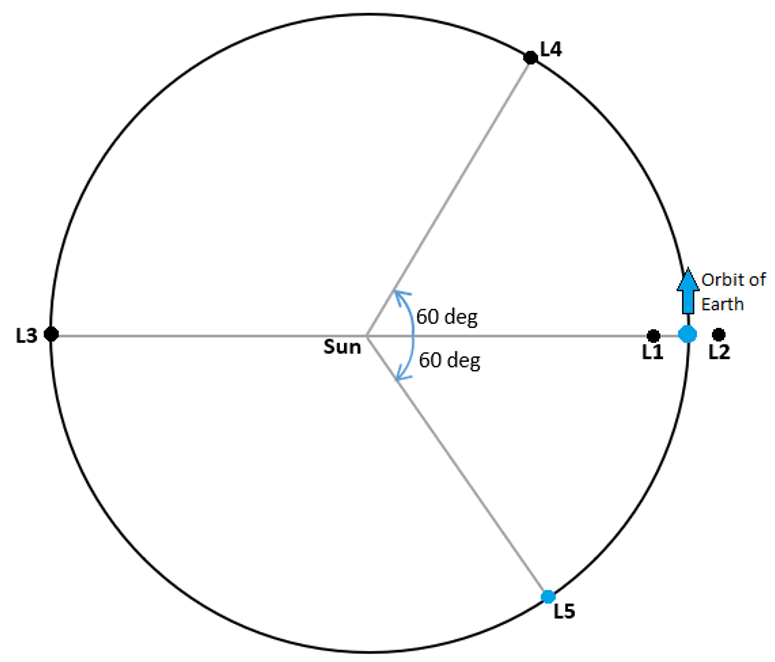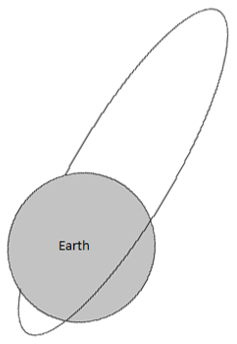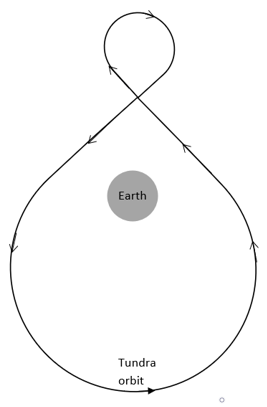This set of Orbital Mechanics Multiple Choice Questions & Answers (MCQs) focuses on “Orbital Maneuvers”.
1. Which of these orbits has one-third the Earth’s radius?
a) Low Earth Orbit
b) Medium Earth Orbit
c) High Earth Orbit
d) Geosynchronous Orbit
View Answer
Explanation: Low Earth orbits are the orbits with its center as the Earth’s center. It has an altitude of 2000 km which is approximately one-third the Earth’s Radius, which is 6,371 km.
2. In which orbit is most of the weather satellites, space stations located?
a) Low Earth Orbit
b) Medium Earth Orbit
c) High Earth Orbit
d) Geosynchronous Orbit
View Answer
Explanation: Most of the weather satellites and space stations are located in the circular or elliptical low-earth orbit. Post Apollo mission, there have been no spacecraft orbiting beyond low earth orbit.
3. Which of these orbits has the lowest ∆v requirement for a spacecraft to enter the orbit?
a) Low Earth Orbit
b) Medium Earth Orbit
c) High Earth Orbit
d) Equatorial Low Earth Orbit
View Answer
Explanation: Equatorial Low Earth Orbit has the lowest ∆v requirement because the spacecraft is launched due east which leads to least ∆v as Earth rotates from east to west with a surface velocity of 1600 km per hour.
4. In which of these orbits is the Global Positioning System situated?
a) Low Earth Orbit
b) Medium Earth Orbit
c) High Earth Orbit
d) Equatorial Low Earth Orbit
View Answer
Explanation: GPS is placed at an altitude of 20,200 km which is the medium-earth orbit. The orbital time-period of GPS is about 12 hours. Most of the navigation satellites are placed in the medium- earth orbit.
5. In which orbit is the Communications satellite placed?
a) Geosynchronous Orbit
b) Medium Earth Orbit
c) High Earth Orbit
d) Equatorial Low Earth Orbit
View Answer
Explanation: The Communications satellite is always placed in the Geosynchronous orbit, as the satellite’s position remains same in this orbit and the fixed antennas are able to communicate with them.
6. Of all the Lagrange points in the High Earth orbit, which of these points is most stable for the satellite?

a) L4 and L5
b) L1 and L2
c) L3
d) L3, L4, L5
View Answer
Explanation: Of all the 5 Lagrange points in a Sun-Earth system orbit, L4 and L5 are the most stable. For all the other points, if the satellite is perturbed even by small amount, it will leave the orbit.
7. Which of these orbits is a high eccentric orbit used for maximizing the viewing time of latitudes?
a) Sun-synchronous Orbit
b) Molniya Orbit
c) Low-Earth Orbit
d) Polar Orbit
View Answer
Explanation: Molniya orbit is a highly eccentric medium earth orbit. It has an eccentricity of 0.722 in order to increase the viewing time of the latitudes as it is an extremely elliptical orbit. The orbit takes 12 hours to complete with Earth rotating underneath it.

8. What motion does the satellite in a high earth orbit follow?
a) Apparent Prograde motion
b) Apparent Retrograde motion
c) Prograde motion
d) Retrograde motion
View Answer
Explanation: At a high earth orbit of an altitude of approximately 35,000 km, the satellite has a apparent retrograde motion. In this the rotation speed of the earth is higher compared to the orbital velocity which leads to Earth’s surface moving westward.
9. Which of these orbits form a highly inclined figure 8 form?
a) Molniya Orbit
b) Tundra Orbit
c) Sun-Synchronous Orbit
d) Polar Orbit
View Answer
Explanation: Tundra orbit is a type of geosynchronous orbit which has a very high inclination of 63.4 degrees with a low eccentricity of range 0.2-0.3. The orbit is of figure 8 form with one of the smaller loops in either of the hemisphere. Compared to Molniya orbit, this has half the orbital time period.

10. In which orbit range does the Van Allen Belts lie?
a) Low Earth Orbit
b) Medium Earth Orbit
c) High Earth Orbit
d) Geosynchronous Orbit
View Answer
Explanation: Van Allen Belts is the belt of high energy protons that lie within the altitude range of 20,000 to 20,650 km which is the Medium Earth orbit. The orbital period of this orbit range is 12 hours.
More MCQs on Orbital Maneuvers:
- Orbital Maneuvers MCQ (Set 2)
- Orbital Maneuvers MCQ (Set 3)
- Orbital Maneuvers MCQ (Set 4)
- Orbital Maneuvers MCQ (Set 5)
- Orbital Maneuvers MCQ (Set 6)
- Orbital Maneuvers MCQ (Set 7)
Sanfoundry Global Education & Learning Series – Orbital Mechanics.
To practice all areas of Orbital Mechanics, here is complete set of 1000+ Multiple Choice Questions and Answers.
If you find a mistake in question / option / answer, kindly take a screenshot and email to [email protected]
